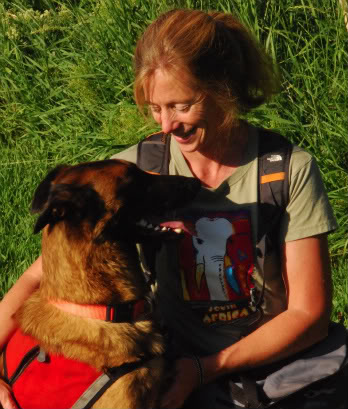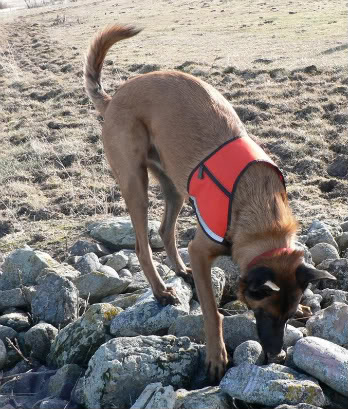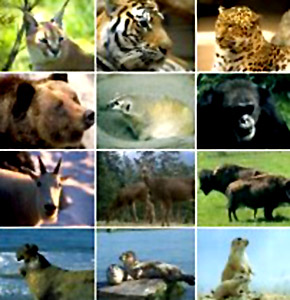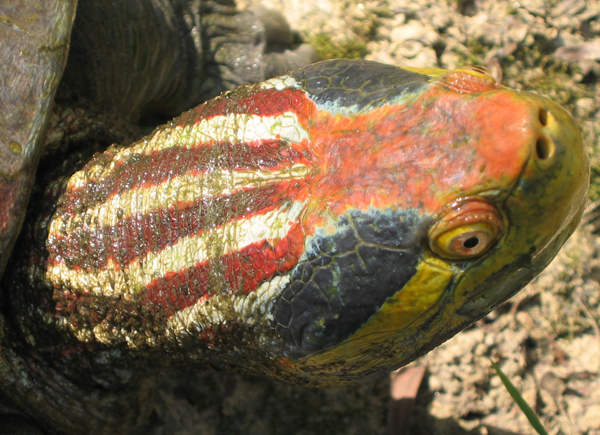Pepin is an adorable 7 year old Belgian Malinois. Like all other dogs, he loves to sniff around under boulders and rocks, behind trees and bushes. But unlike other dogs, Pepin is not just sniffing for bones. He has been trained to sniff and locate endangered animal scats so that they can be traced and located in their wilderness habitat. With his trainer and friend Megan Parker in tow, Pepin lives every day the remarkable role of a canine conservationist.

Megan Parker says she is often found carrying animal scat in her purse! Although it may sound disgusting, it is a treasure trove of information for her trained canine pet Pepin, who smells the poop and instantly understands which animal he has to locate in the wilderness.
The duo has helped conservation efforts around the world. From endangered kit foxes in the San Joaquin Valley to the perilously small population of Cross River gorillas in the mountains of Cameroon, there are numerous animals that have been traced, thanks to the super sensitive smelling machine – Pepin.
Smelling Scat
Megan is one of the four co-founders of Working Dogs for Conservation, a nonprofit group of six biologists who trained their canines to work on behalf of wildlife.
She says,
“Scat is a gold mine of information. People see and hear the world. But dogs are really good at this because they smell the world.”
In the forests and jungles it is always challenging to find wild animals, because of the difficult access, their proven ability to hide well especially with humans around and sometimes simply because they are very rare and it is literally the case of finding a needle in a haystack.
Scientists and researchers depend a lot on the scat samples strewn on the forest floors for detection of animals in a particular area.
The poop analysis can reveal, first the identity of the animal, its gender, its relation to other individuals, its diet, hormone level and also any diseases it might be carrying. By mapping areas where samples are found, an animal’s home range can also be determined.
With canine conservationists like Pepin though, the scat becomes the clue for a wild treasure hunt chase. Megan demonstrated how recently.
With samples of wolverine and cheetah scat from her stash, Megan let Pepin sniff around a lecture hall among 50 people seated in a row of chairs. In less than 10 minutes, the dog fitted with a bright orange vest, his work uniform, found the scent source and alerted Megan by promptly sitting at that place and staring at her intently.
Canine Detectives
Megan says, the Belgian Malinois is one of the many dogs they train. There are nine dogs on staff at Working Dogs for Conservation. From retrievers, border collies to German shepherds, they are the breeds known to have a very strong sense of smell. The dogs have been brought from shelters and the role of being detectives somehow suits them better than just being house pets.

According to Megan the dogs live with their trainers and it is this close bonding that actually makes their detection work so successful. The trainers are well aware of their dog’s nature and when outdoors because the dog is not chained to a leash, it is easier for the trainer to sense when a dog has really found the target species or just testing the handler.
Alice Whitelaw, another cofounder of the group says it makes sense to train dogs for locating endangered animals. The system works better than human led searches because of the dog’s natural talent and also because it is much cheaper than employing technology such as radio collaring.
So far, the dogs have worked on 38 projects in 11 countries.
The training of the dogs is much in the same way as dogs are trained for bomb detecting squads. It takes about four weeks to train a dog on a particular scent and Pepin can already detect fifteen different scents ranging from snails, endangered plants, animals to even snares.
And what is the reward Pepin gets for his incredible work? It is the time to play with his favourite toy! Every time he finds a target Pepin plays a game of tug with Megan and his toy. Although it may sound like a petty reward for his hardwork, according to expert Brian Hare, co-author of “The Genius of Dogs.” That is all that is needed as dogs perceive reward differently from people.
“If you take a dog with a natural instinct to search and add the bonus of being with humans while searching, you’ve got a powerful ally when a sense of smell is the best avenue to discovering what you are looking for” says Brian.
Not Just Animals
With these super sensitive smellers at work Megan and her colleagues say that finding animal scats is not the only thing that the dogs like Pepin can help with. Te dogs can nose out specific plant species too with their smelling sense twice as good as people. This particular ability helps in finding invasive plant species in a given area.
The canines can also be trained to locate snares – an important ability more so because of the growing threat of poachers in protected reserves.
Pepin has recently learned to sniff out snares and in two months time, he will be travelling to Africa along with Megan to see if he can find the snares faster than the forest guards and hopefully, even faster than the poor wild animals that get trapped in those snares.
In India sniffer dog training programs have been put in place by organisations such as the World Wildlife Fund since 2008. The dogs have been trained to detect hidden wildlife articles such as Tiger bone, Tiger skin, Leopard bone, Leopard skin and bear bile and are placed with the Forest Departments of Haryana, Uttarakhand, Maharashtra, Madhya Pradesh and Jharkhand.
The story of Pepin, just shows that this is a coservation area that can be utilised more in our country, where technology as well as manforce problem is creating great risks for the wild and endangered species.
To know more about Pepin and other dogs like him go to Working Dogs for Conservation
More Related Stories,
Rare Flock of White Rumped Vulture Spotted in Assam
Soldier Saves Sambar Deer Fawn from Stray Dogs
183 Plants, 40 Animals Endangered in Karnataka
Image courtesy Mongabay and Conservation Dogs






One thought on “The Dog that Smells Endangered Animals”